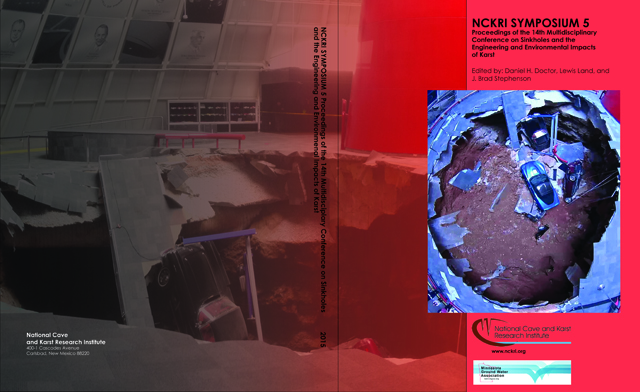Abstract
A pair of groundwater tracer studies at a single karst test site were completed 18 years apart. The results of these studies have provided evidence of both relatively rapid advective transport via conduits and an extreme capacity for dye storage and retardation. The tracer results, coupled with other subsurface investigation data, are used to develop a conceptual model for groundwater movement through this karst aquifer in the Frederick Valley of Maryland, as well as identify implications for remediation. Three fluorescent tracer dyes used in the initial study were detected in several background monitoring locations established for the second study conducted 18 years later, demonstrating the persistence of these dyes in the aquifer. One of these dyes was not detected during the original study, providing useful information regarding flow and transport in the aquifer. At some of these sampling locations, at least one of the dyes was degraded, and would have gone undetected without the use of activated carbon samplers. Lastly, even though relatively rapid first detections occurred during both studies (as compared to non-karst groundwater systems) the majority of injected dye mass remained in the aquifer after the studies were completed. This suggests that the aquifer has a large capacity to store contaminants and that low levels of contaminants can be expected to persist in groundwater discharged from springs for a long period of time.
DOI
http://dx.doi.org/10.5038/9780991000951.1061
Included in
Environmental Engineering Commons, Environmental Monitoring Commons, Geochemistry Commons, Geology Commons, Hydrology Commons
Tracer Studies Conducted Nearly Two Decades Apart Elucidate Groundwater Movement through a Karst Aquifer in the Frederick Valley of Maryland
A pair of groundwater tracer studies at a single karst test site were completed 18 years apart. The results of these studies have provided evidence of both relatively rapid advective transport via conduits and an extreme capacity for dye storage and retardation. The tracer results, coupled with other subsurface investigation data, are used to develop a conceptual model for groundwater movement through this karst aquifer in the Frederick Valley of Maryland, as well as identify implications for remediation. Three fluorescent tracer dyes used in the initial study were detected in several background monitoring locations established for the second study conducted 18 years later, demonstrating the persistence of these dyes in the aquifer. One of these dyes was not detected during the original study, providing useful information regarding flow and transport in the aquifer. At some of these sampling locations, at least one of the dyes was degraded, and would have gone undetected without the use of activated carbon samplers. Lastly, even though relatively rapid first detections occurred during both studies (as compared to non-karst groundwater systems) the majority of injected dye mass remained in the aquifer after the studies were completed. This suggests that the aquifer has a large capacity to store contaminants and that low levels of contaminants can be expected to persist in groundwater discharged from springs for a long period of time.

